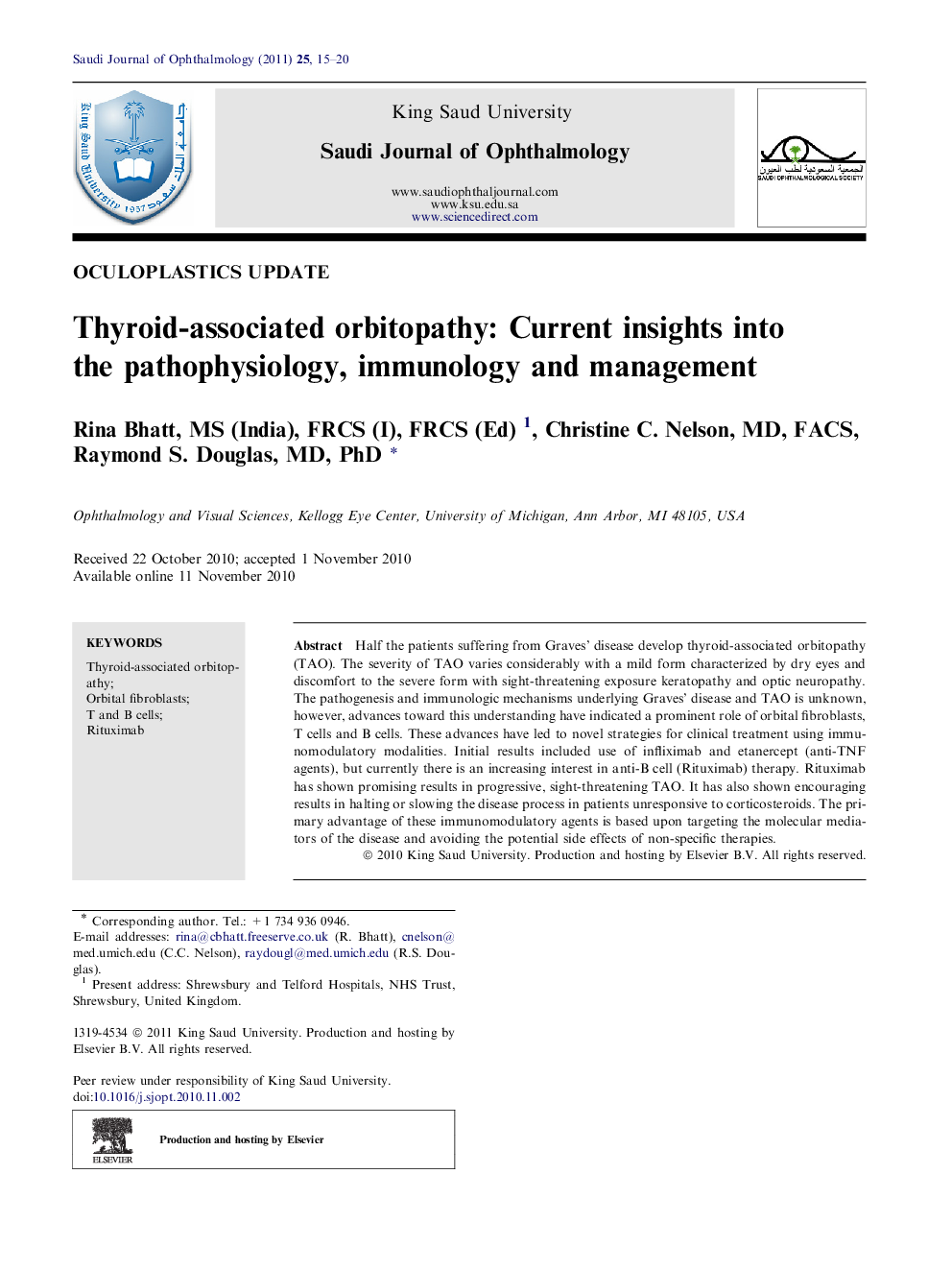| Article ID | Journal | Published Year | Pages | File Type |
|---|---|---|---|---|
| 2704475 | Saudi Journal of Ophthalmology | 2011 | 6 Pages |
Half the patients suffering from Graves’ disease develop thyroid-associated orbitopathy (TAO). The severity of TAO varies considerably with a mild form characterized by dry eyes and discomfort to the severe form with sight-threatening exposure keratopathy and optic neuropathy. The pathogenesis and immunologic mechanisms underlying Graves’ disease and TAO is unknown, however, advances toward this understanding have indicated a prominent role of orbital fibroblasts, T cells and B cells. These advances have led to novel strategies for clinical treatment using immunomodulatory modalities. Initial results included use of infliximab and etanercept (anti-TNF agents), but currently there is an increasing interest in anti-B cell (Rituximab) therapy. Rituximab has shown promising results in progressive, sight-threatening TAO. It has also shown encouraging results in halting or slowing the disease process in patients unresponsive to corticosteroids. The primary advantage of these immunomodulatory agents is based upon targeting the molecular mediators of the disease and avoiding the potential side effects of non-specific therapies.
